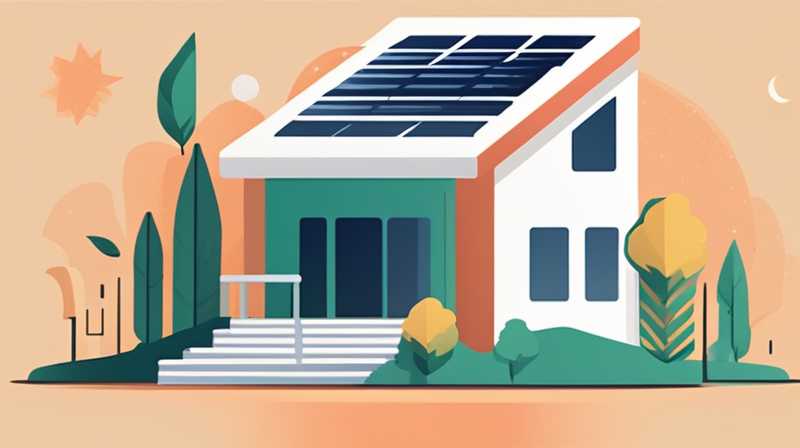
1. NATURE OF SOLAR INSTALLATION: The foremost aspect involves understanding the site assessment. A thorough evaluation of your building’s location is crucial, as sunlight exposure determines the efficiency of solar panels. Furthermore, roof condition is vital; any existing damage needs addressing prior to installation to avoid additional costs later. Conducting research on local regulations and permits beforehand saves time and avoids potential legal issues that could arise.
2. INITIAL COSTS AND ROI: The financial commitments involved in solar energy installation can’t be underestimated. Assess the upfront costs, which can be substantial, including panels, inverters, and installation fees. However, analyzing the long-term financial benefits is essential too. Energy savings can lead to a positive return on investment, particularly as energy prices continue to rise. It’s wise to explore available incentives, such as federal and state tax credits, which can effectively lessen the initial financial burden.
3. TECHNOLOGY CHOICES: A myriad of solar technologies exists on the market, with the two primary options being monocrystalline and polycrystalline panels. Monocrystalline panels boast higher efficiency and a sleek design, suited for limited space. Polycrystalline panels usually present lower efficiency levels but are often more affordable. One must also consider inverters; the choice between string inverters and microinverters can significantly impact system performance and costs. Consultation with solar professionals can help make an informed decision tailored to one’s specific needs.
4. SYSTEM SIZE AND ENERGY NEEDS: Understanding the size of the installation is paramount for optimizing energy generation. Calculating your household’s energy needs requires evaluating historical energy consumption data. Oversizing a system can lead to unnecessary expenses, while undersizing results in insufficient energy generation. Striking the right balance ensures that the installation meets energy requirements without excessive investment. Furthermore, consider future needs; intended household expansions or energy-efficient appliances should be factored into your calculations.
5. LOCATION AND ENVIRONMENTAL IMPACT: Environmental factors significantly affect solar panel efficiency. Areas with frequent shading from trees or buildings can limit energy output. A proper orientation and tilt towards the sun are necessary for optimizing performance. Furthermore, considering an installation’s environmental impact entails understanding the materials’ lifecycle. Choosing sustainable options can enhance the project, making it more environmentally friendly while contributing to a lower carbon footprint.
6. MAINTENANCE AND PERFORMANCE MONITORING: System upkeep cannot be overlooked. Regular checks and cleaning ensure that solar panels operate efficiently. Many users underestimate maintenance needs, which can lead to decreased performance. Performance monitoring systems can help track energy production and identify any discrepancies that may arise. Being proactive in addressing these issues ensures long-term sustainability for your solar installation.
FAQs
WHAT IS THE AVERAGE COST OF INSTALLING SOLAR PANELS?
The installation expense of solar panels can fluctuate significantly based on various factors. Generally, the range for residential solar installations is between $15,000 to $30,000, including equipment and labor. This variance depends on the quality of solar panels chosen, the complexity of the installation, and any additional features such as battery storage systems. Moreover, local market conditions and state incentives play a crucial role in influencing the total investment. It’s advisable to obtain multiple quotes from different solar providers and analyze them carefully to ensure you receive the best deal. This process can significantly impact the overall financial feasibility of solar energy for consumers.
HOW LONG DO SOLAR PANELS LAST?
The lifespan of solar panels typically ranges from 25 to 30 years. During this period, they maintain a significant portion of their output efficiency; most manufacturers guarantee around 80% efficiency after 25 years. However, several factors may influence longevity, such as environmental conditions, installation practices, and periodic maintenance. Regular cleaning and inspection can mitigate damage from external elements. While most panels do exhibit excellent durability, it is crucial to monitor performance over time to maximize energy production throughout their lifespan, ensuring that homeowners benefit from the initial investment.
ARE SOLAR PANELS WORTH THE INVESTMENT?
Deciding on solar energy’s viability entails a careful examination of both immediacy and long-term benefits. The initial outlay may appear daunting; however, in many cases, homeowners see significant savings on their energy bills over time. In areas with high electricity rates or energy demands, solar installations frequently yield enhanced savings. Additionally, with federal and state incentives bolstering affordability, the financial viability of solar energy increases. Beyond the immediate monetary benefits, solar panels contribute to sustainability and environmental responsibility, elevating their worth to those who prioritize green energy solutions. Therefore, the decision is not solely based on funds but should reflect personal values and future energy needs.
**In light of everything discussed, embarking on solar energy adoption requires meticulous consideration of various factors. A thorough analysis of the installation site, including sunlight exposure, shading issues, and roof integrity, ensures optimal panel performance. Financial implications cannot be overlooked, with the initial investment often countered by significant savings on utility bills over time. Technological choices, including the type of panels and inverters, must reflect not only budgetary constraints but also the intended energy output. The system’s size in relation to a household’s energy usage is critical; careful assessment of current and future needs helps avoid overspending or energy inadequacies. In addition to these economic factors, the environmental impact of solar technology should support sustainable practices, reflecting a commitment to greener solutions. Proper maintenance and monitoring of the solar system assure that investment yields maximum returns throughout its expected lifespan.
Ultimately, a solar energy installation is not merely a financial decision; it symbolizes a step toward a sustainable future. The knowledge acquired through pre-installation considerations empowers homeowners to take informed actions. Such proactivity enhances overall effectiveness while safeguarding the investment’s sustainability. In essence, adopting solar energy is not only an opportunity for energy independence but also a broader commitment to environmental stewardship. As society increasingly shifts towards renewable energy sources, individual choices in solar installations can contribute significantly to this global transformation.**
Original article by NenPower, If reposted, please credit the source: https://nenpower.com/blog/what-should-you-pay-attention-to-before-installing-solar-energy/


